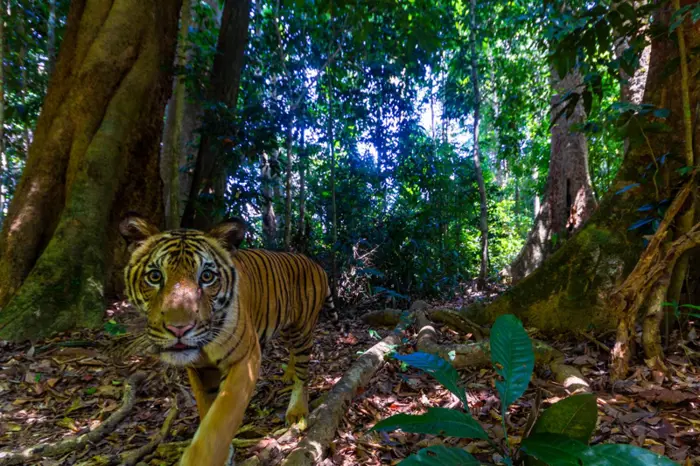By GISELE SOO
AS WE walked out of the viaduct in Royal Belum State Park in Gerik, Perak, an elephant entered our view, completely catching us off guard.
We stood and watched in amazement as the enormous mammal reached for the leaves of a nearby tree.
Within the Royal Belum State Park – which is part of the Belum-Temengor Forest Reserve – is the A-PL1 viaduct, as named in the Ecological Connectivity in Central Forest Spine (CFS) by PLANMalaysia.
Built in 2015, this viaduct, underneath the Gerik-Jeli Highway, provides a safe passage for wildlife living in the forest reserve. This structure is part of the efforts by World Wide Fund For Nature Malaysia (WWF) to safeguard wild animals.
Senior field biologist Muhamad Afif Wafiy Mohamad Taib, who was the media trip’s group guide, said the walkway connects two points, allowing animals – including the endangered Malayan tigers – to cross safely without getting run over by cars on the highway.
“By providing them with a larger area to roam, the viaduct also promotes a diverse genetic pool to prevent inbreeding, which can affect the animals’ survival,” he added.
The viaduct is vital in wildlife conservation, especially as roadkills become more prevalent thanks to habitat loss. Among the victims most affected by this are tigers, elephants, wild boars and macaques.
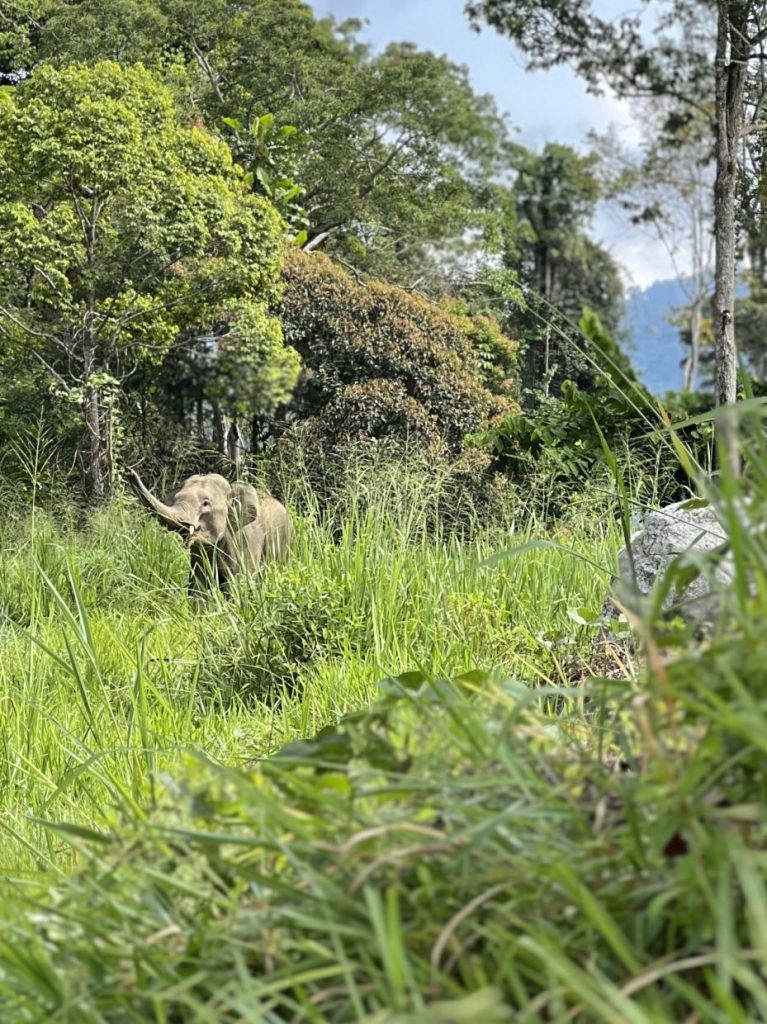
Safeguarding the voiceless
To increase the tiger population, WWF-Malaysia and Maybank have jointly worked on their Strengthening Tiger Conservation in the Belum-Temengor Forest Complex project since 2016.
Maybank group corporate affairs head and Maybank Foundation CEO Izlyn Ramli said conserving tigers is not just about saving a single species but preserving an entire ecosystem, promoting sustainable development and upholding cultural and ecological diversity.
“We want to ensure that the Malayan tigers are able to continuously live and prosper. Our focus now includes strengthening prey augmentation and enhancing community engagement especially with the indigenous community, for a more systematic and holistic approach in protecting the Malayan tigers.”
The absence of tigers, Muhamad Afif Wafiy said, will affect the entire ecosystem. “We need to have tigers for ecological harmony.”
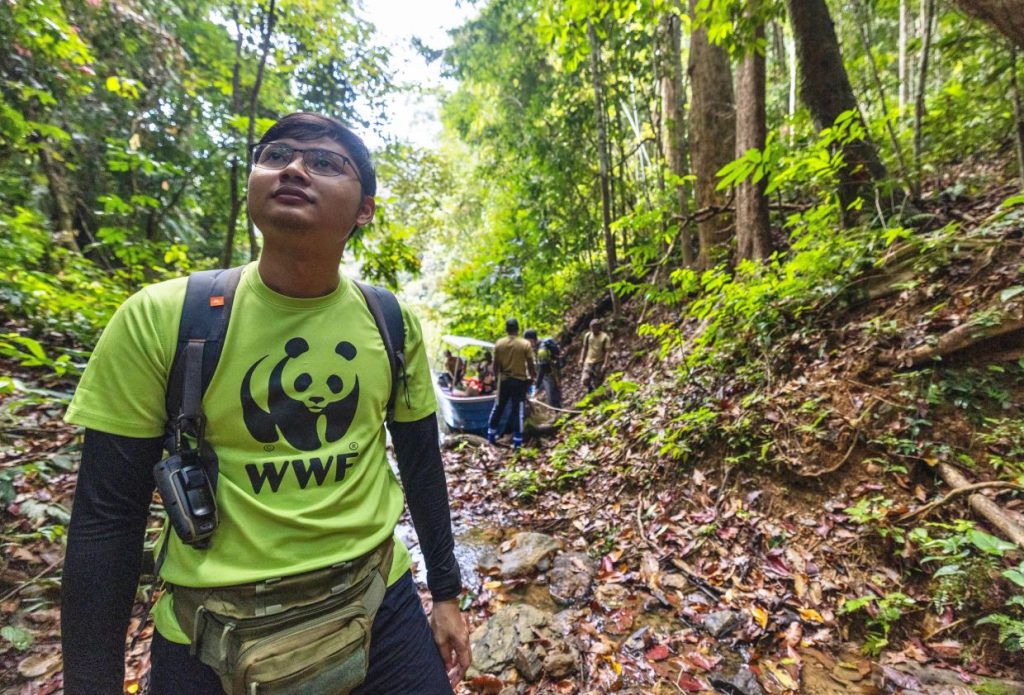
With less than 150 Malayan tigers left in the country, the majestic animal has been classified as a critically endangered species on the IUCN Red List since 2015, making it all the more important to protect them.
One of the top contributing factors to the tigers’ declining population is poaching. Illegal wildlife trade poses a grave threat to all kinds of animals living in the wild, and tigers are not spared from this illicit activity.
Tigers are known to be hunted for their body parts, which are highly valuable in the illegal market. Their bones are used in traditional Chinese medicine for arthritis, while their skin is often turned into luxury goods. “Buyers” also value their claws and teeth, which are believed to have healing powers (and bring good luck).
Other wild animals, including elephants and sun bears are also common victims, with the former hunted for ivory.
Collateral damage
Some time back, a photo of a “three-legged” sun bear was captured in one of the camera traps in the Temengor Forest Reserve, Muhamad Afif Wafiy said.
He explained that the bear was caught by a snare installed by ruthless poachers to trap wild animals, which painfully led to severe injuries as it attempted to escape the thin, wire noose.
Over the span of eight years, the WWF team managed to deactivate more than 235 active snares, with the help of the Orang Asli community. The snares are meant for other target animals like elephants and tigers but when sun bears walk into them, they sadly become collateral damage.
Muhamad Afif Wafiy said the team has witnessed a significant drop in the number of traps in the area since the introduction of Project Stampede in 2018. “Through the initiative, the Orang Asli were recruited as rangers to deter poachers. These illegal hunters – from Vietnam, Thailand and Cambodia – typically capture the animals using snares, which have a devastating impact on wildlife,” he highlighted, saying WWF is working closely with Orang Asli in this effort.
He said 15 years ago, a two-year-old tiger was found to have been ensnared for more than two days in the Royal Belum State Park. Unfortunately, it succumbed to injuries not long after being rescued.
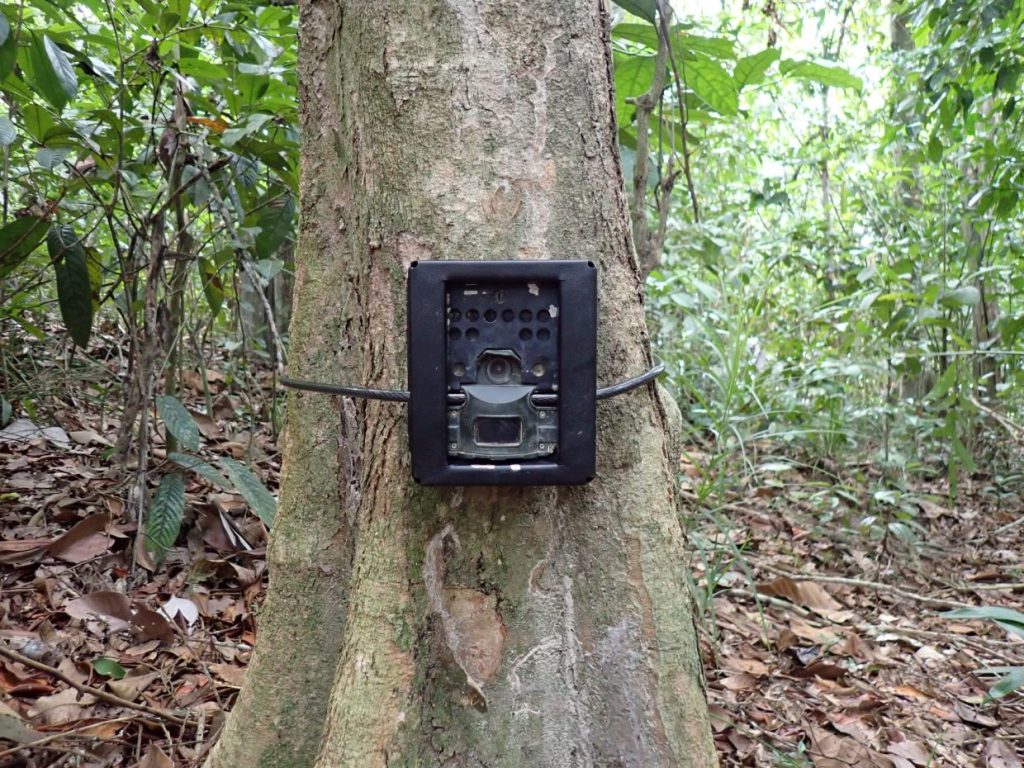
As a way to protect these animals against trespassers, rangers work round the clock patrolling the woods. They are tasked with not only removing the snares, but also looking for signs of encroachment.
He said the rangers will immediately notify law enforcement agencies like the Perak State Park Corporations (PSPC), Department Of Wildlife And National Parks Peninsular Malaysia (DWNP) and Forestry Department if they spot suspicious activities during their patrols.
“Orang Asli is our biggest partner in the landscape, they know the area like the back of their hands. We have trained them on how to carry out anti-poaching patrols and set up camera traps, handle GPS and read contour maps,” he added.
“They are also capable of conducting covert operations now. Their contributions to this initiative are invaluable.”
The rangers are also responsible for setting up camera traps, a device primarily used in monitoring wildlife in their habitat.
With about 500 photo traps at present, the equipment has proved to be an effective tool to acquire data on the animals (and the area).
“For instance, a picture of a tiger allows us to easily identify them, as they have distinctive stripes. This is especially helpful when it comes to measuring tigers’ density. The image recordings are useful for checking prey abundance in the forest as well,” he explained.
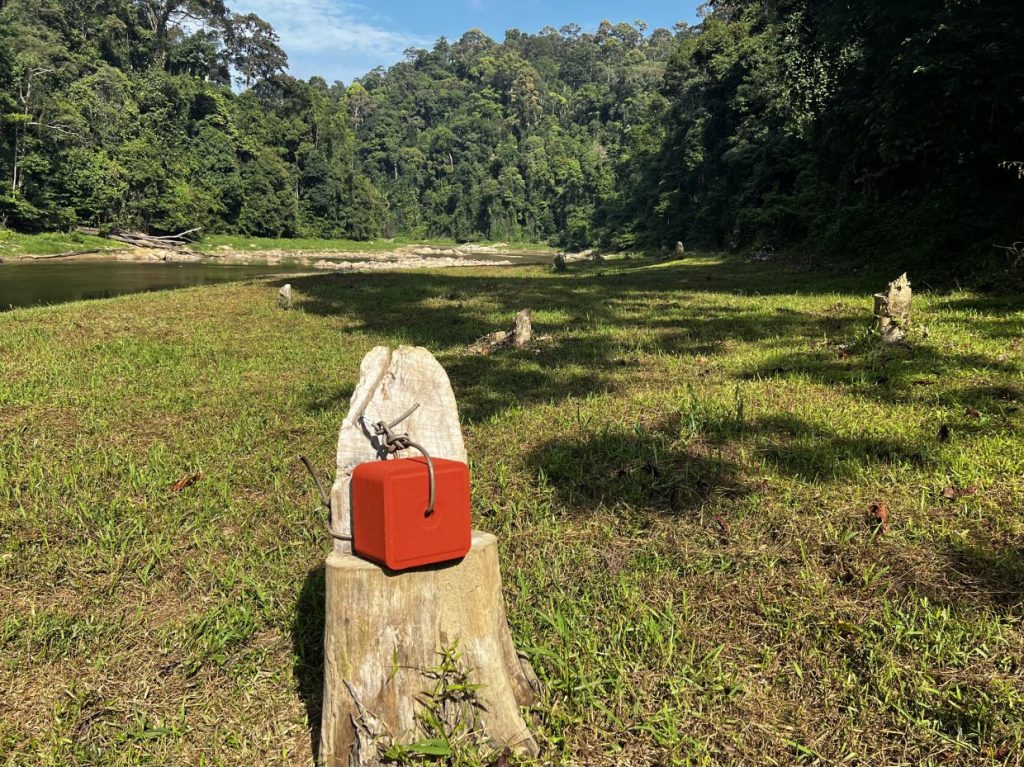
Availability of food
Food is scarce for tigers, and poaching is again the main culprit, causing the loss of prey in the area. Generally, tigers hunt wild boar, sambar deer and wild ox (gaur).
Even though poaching threats have gone down today, it has affected the number of sambar deer that inhabit the Belum-Temengor forest.
Worsening the situation was the 2022 African swine flu outbreak that caused the disappearance of wild boars.
“From our cameras, we have begun to see more hungry, carnivorous animals roaming into human settlements searching for food.
“To make sure that the tigers have adequate food supply, WWF teamed up with PSPC and DWNP to release sambar deer and gaur into Royal Belum in 2022 and 2023,” he shared.
The organisation is planning to reintroduce wild boars back into the wild, which will take place later this year. “Many aspects have to be taken into account, hence DWNP is structuring the best possible way to execute the release.”
At the same time, it’s equally crucial to have healthy prey density in order to sustain tigers – herbivores, such as deer and gaur, are important.
Salt licks, also known as mineral licks, serve as essential nutrients for these herbivores. There are two types of salt licks: dry (sira gajah, which can be found in Temengor) and wet (sira rambai in Royal Belum).
The former can be found on rocks or boulders, while to the untrained eye, the latter resembles a puddle of mud.
The rangers place artificial mineral blocks in the forest to ensure the “accessibility of minerals and nutrients that animals might not obtain sufficiently from their natural diet”.
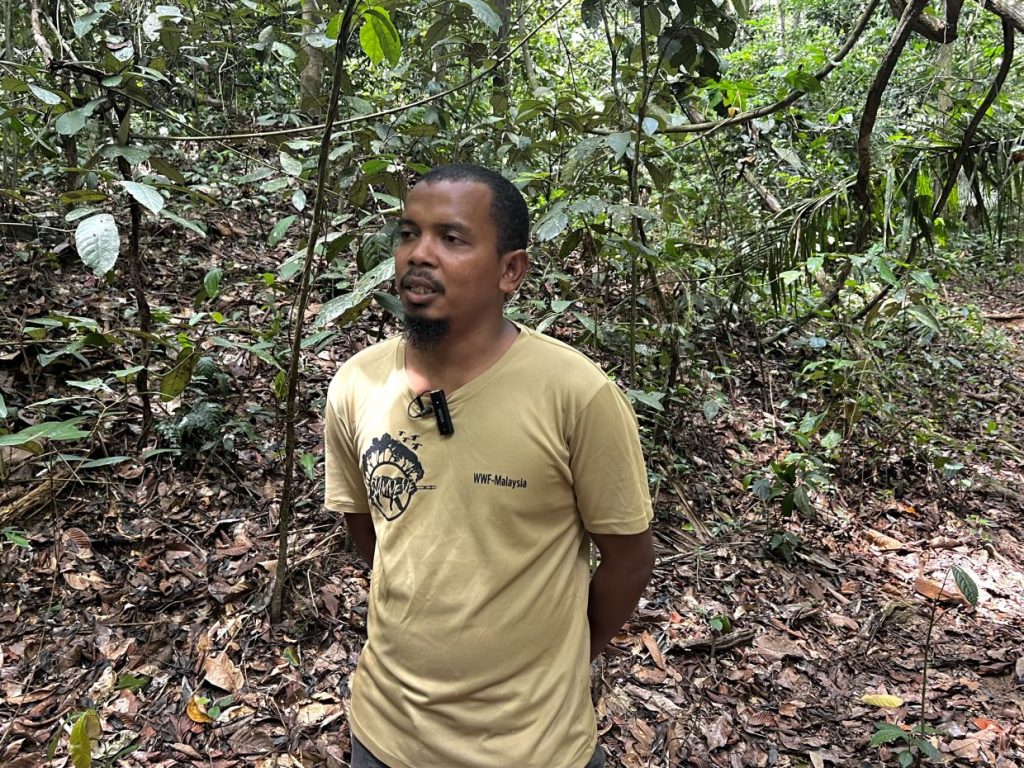
Animal encounter
“It sounded like a plane taking flight,” Yahya, 30, who is an Orang Asli ranger, described his tiger encounter during a patrol in the forest. “The group heard a loud, deep cry from a distance, which immediately stopped us in our tracks.”
Yahya has been a guide for five years and is glad to be part of the conservation programme. It gives him an opportunity to give back to the community to protect his home and its wildlife.
“I worked briefly in Kuala Lumpur but decided the hectic pace of city life wasn’t for me,” said the nature lover.
One of the most memorable memories he had while working as a ranger was encountering elephants three years ago.
“We were sleeping and our tents were suddenly lifted by the elephants that were looking for food. Not wanting to provoke them, we waited in silence for them to leave.”
Despite spending eight years as a field guide, Muhamad Afif Wafiy hasn’t met the “big cat” because tigers “are instinctively repulsed by the scent of humans”.
“They can smell us from afar and will run before we can even spot them. I’ve only come across fresh tiger tracks, scratches they leave on trees and the distinctive odour of their urine,” he said.
Source: TheStar
Follow our Facebook page ConserveByU for our latest updates.


